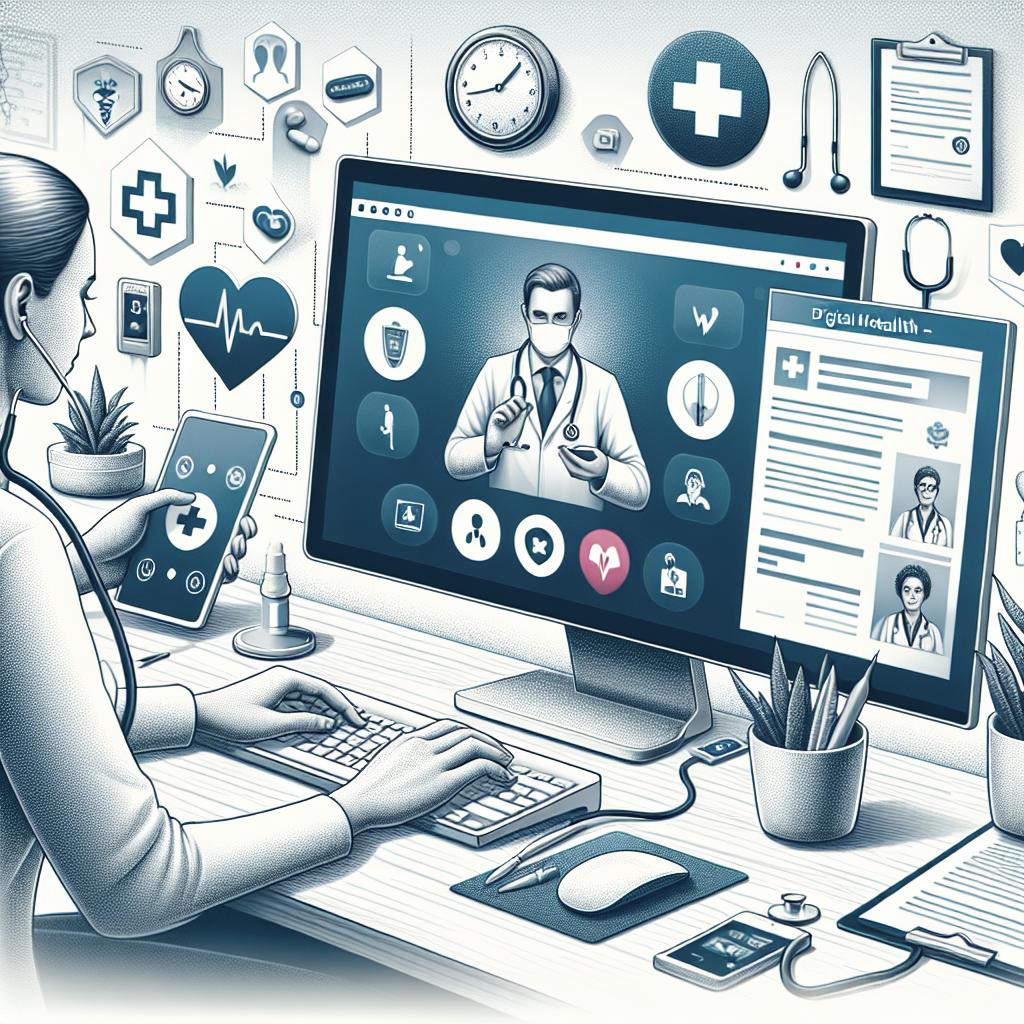“`html
The Benefits of Telemedicine Platforms
As technology continues to integrate into every aspect of our lives, the healthcare sector is no exception. Telemedicine platforms have emerged as a revolutionary trend, offering numerous advantages that extend beyond the traditional doctor’s office visit. This article delves into the remarkable benefits telemedicine platforms provide, from offering comfort and convenience to patients, to improving infection control, enhancing assessment accuracy, fostering family connections, and facilitating the management of chronic conditions and primary care. Whether you’re a healthcare provider assessing the value of implementing such technology or a patient interested in more flexible healthcare options, understanding these benefits can provide valuable insights into how telemedicine is reshaping medical care today.
Comfort and Convenience
One of the most notable benefits of telemedicine platforms is the level of comfort and convenience they offer. Patients no longer need to spend time commuting to a clinic or waiting in crowded waiting rooms. With just a few clicks, they can access medical professionals from the safety and comfort of their own home. This is particularly beneficial for individuals with mobility issues, those living in rural areas, or anyone with a busy schedule. Telehealth appointments can be scheduled at a time that suits both the patient and the healthcare provider, enabling a flexible approach to healthcare management.
Furthermore, telemedicine allows for immediate consultations and faster responses. Patients experiencing non-emergency issues can receive swift medical advice and avoid unnecessary hospital visits. This immediacy not only enhances patient satisfaction but also reduces the burden on healthcare facilities, allowing them to prioritize urgent cases more effectively.
Control of Infectious Illness
The COVID-19 pandemic has underscored the critical role telemedicine platforms play in controlling the spread of infectious diseases. By minimizing physical contact, telemedicine significantly reduces the risk of transmitting infections among patients and healthcare providers. Virtual visits eliminate crowded clinics, which are often hotspots for acquiring illnesses.
In addition, telemedicine platforms enable ongoing monitoring of infectious disease symptoms from afar. Clinicians can provide invaluable guidance on symptom management, prescription refill, and behavior modification without risking exposure. This approach ensures that even highly contagious patients receive the necessary care while limiting the possibility of outbreaks.
Better Assessment
Telemedicine platforms offer unique opportunities for enhanced assessment through closer observation of patients in their home environments. Clinicians gain insights into potential health influencers that might not be apparent within a clinical setting. For example, they might observe lifestyle factors, household risks, or patterns that affect a patient’s health.
Additionally, telemedicine applications often come equipped with integrated tools such as video conferencing, digital stethoscopes, and wearable technology, which allow for more comprehensive patient evaluations. These technologies can provide essential data that support diagnostic accuracy. Furthermore, patients are more relaxed and forthcoming when consulting from the comfort of their own homes, often leading to more open communication and accurate reporting of symptoms.
Family Connections
Telemedicine enhances the involvement of family members in the healthcare process, which can be crucial for patient support, especially for the elderly or those with chronic health conditions. Through video calls, family members can join consultations, ask questions, and participate in the decision-making process regardless of geographical barriers.
Furthermore, involving family members in medical appointments strengthens the support network for the patient, which is a vital component in achieving optimal health outcomes. Families can help implement care plans, monitor medication adherence, and provide emotional support, all facilitated through the accessibility of telemedicine platforms.
Primary Care and Chronic Condition Management
Managing chronic conditions and providing primary care are two primary areas where telemedicine platforms truly excel. For patients with conditions such as diabetes, hypertension, or asthma, regular monitoring and check-ins are crucial. Telemedicine provides a straightforward way for these patients to receive continuous care without frequent in-person visits.
Telemedicine also aids in the personalization of treatment plans, as healthcare providers can more frequently update and adapt these plans based on timely data provided by the patient. This sustained interaction helps maintain patient engagement and adherence to treatments, reducing complications and enhancing quality of life.
Lessons Learned
As we explore the benefits of telemedicine, it’s clear this technology serves as a pivotal advancement in healthcare delivery. Telemedicine platforms provide unmatched comfort and convenience, playing a key role in controlling infectious diseases, enabling better patient assessments, fostering familial involvement, and improving chronic condition management. These insights underscore telemedicine’s potential as an indispensable tool in modern healthcare strategies, offering both medical professionals and patients improved access and outcomes.
| Benefit | Description |
|---|---|
| Comfort and Convenience | Eliminates travel and wait times, offers flexible appointments, enables immediate response to non-emergencies. |
| Control of Infectious Illness | Reduces transmission risk, allows remote symptom monitoring, provides guidance without exposure. |
| Better Assessment | Enables observation in home environments, uses integrated tools for thorough evaluation. |
| Family Connections | Encourages family involvement, supports patient decisions, strengthens support networks. |
| Primary Care and Chronic Condition Management | Facilitates regular monitoring, personalized treatment plans, enhances patient engagement. |
“`


